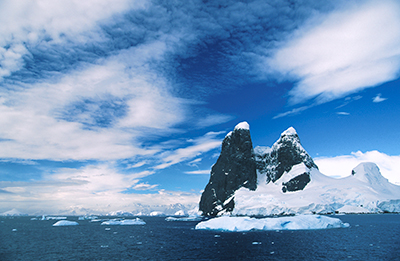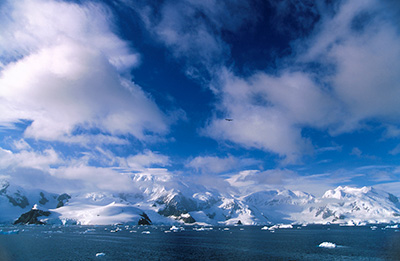
By Candice Gaukel Andrews
Coming across a few stones might not seem all that extraordinary when you're standing on Mount Erebus in Antarctica. After all, the White Continent is almost all rock and ice. But one astute volcanologist saw something in those stones -- arranged in a loose ring -- that was a lot more: remnants of Robert Falcon Scott's "highest camp," set up during the 1912 Terra Nova Expedition.
In December 2012, Clive Oppenheimer, a researcher from England's Cambridge University who has been studying the 12,444-foot, ice-covered Mount Erebus volcano for decades, discovered the camp. Working as part of a team supported by the National Science Foundation, Oppenheimer is the first known visitor to the site since Scott's men left it more than a hundred years ago. Oppenheimer located the camp by using a combination of written accounts and historic images from the university's Scott Polar Research Institute, which was founded in 1920.
Race to the pole

Robert Falcon Scott was a British Royal Navy officer and explorer who led two expeditions to Antarctica: the Discovery Expedition of 1901-04 and the Terra Nova Expedition of 1910-13. In 1902, Scott described his intense desire to reach the South Pole as having been "bitten by pole mania." His Terra Nova Expedition succeeded in its goal. On January 17, 1912, after miles of enduring blizzards, small food rations and each man hauling a two-hundred-pound sledge through soft snow in which he sank up to his knees, Scott and four of his crew made it to the pole. It was a bittersweet victory, however. As they approached, one of the men spotted a Norwegian marker flag. Explorer Roald Amundsen and his team eclipsed Scott's accomplishment by five weeks when they reached the geographic South Pole on December 14, 1911. On their return journey, Scott and his dispirited comrades all died from a combination of extreme cold, exhaustion and starvation just eleven miles from safety.
The ring of stones that Clive Oppenheimer recently found appears to be where a tent once stood. Historic records show that a camp was erected there in 1912 by a team from the shore party of the Terra Nova Expedition that climbed Ross Island's Mount Erebus. The world's most southerly active volcano was discovered in 1841 during an expedition led by Sir James Clark Ross, who named it after one of his ships, the H.M.S. Erebus. In 1908, members of Sir Ernest Shackleton's Nimrod Expedition were the first to reach the summit. It took five and a half days for Shackleton's party to hike up Erebus. Even then, the top was hard-won; a blizzard kept the men in their sleeping bags for more than twenty-four hours with nothing to drink, exposed them to Fahrenheit temperatures of thirty degrees below zero, caused one of the team's members to collapse with exhaustion, and gave another an extreme case of frostbite that cost him a big toe.
A more leisurely trip
Although Oppenheimer's discovery appears to match a photo of the campsite taken by a member of the 1912 Terra Nova Expedition, conservators from the New Zealand-based Antarctic Heritage Trust have been asked to verify the find. If the spot can unequivocally be declared as Scott's highest camp, it will join other artifacts from Antarctica's storied human history. A number of Heroic Age of Antarctic Exploration huts used by adventurers such as Scott and Shackleton -- along with items ranging from scientific equipment to expedition supplies -- have been well preserved by the extremely cold and dry Antarctic climate. 
While the end for Scott and his fellow explorers was tragic, their legacy is not. A search party found the men the following summer, and they erected an ice cairn over the bodies as a mark of respect. The Terra Nova adventurers soon became national heroes for their perseverance under the toughest of conditions and for their courage.
Still today, being bitten by pole mania is a very real possibility. According to the International Association of Antarctica Tour Operators, 26,509 tourists visited Antarctica in the 2011-2012 season. Although not all actually reached the South Pole, just going to the continent is like standing in the stone circle of heroic explorers from a golden age.
If you'd like to discover the White Continent for yourself, a number of adventure tour companies are offering trips to Antarctica for the 2013-2014 season.
All photos ©Colin McNulty